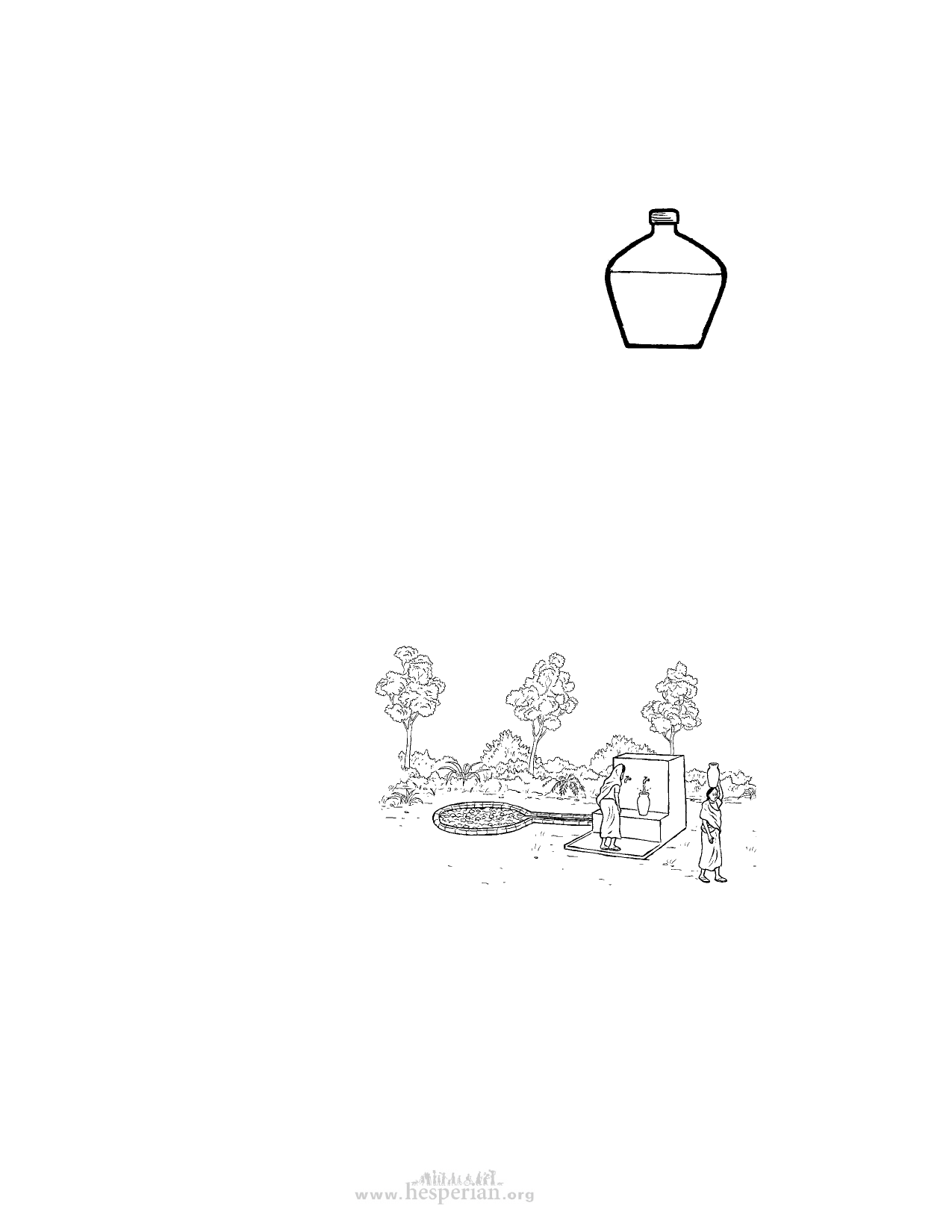
36 Water for Life
Clean water vessels and keep them clean
Stored water can become unsafe when it is touched by people with dirty hands, when
it is poured into a dirty vessel, when dirt or dust gets in the water, and when dirty
cups are used. To prevent water from becoming unsafe at home:
• Wash hands before collecting and carrying water.
• Clean the vessel that is used to carry water.
• Carry water in a covered vessel. This will also
prevent spilling.
• Regularly clean the container where water is
stored in the house.
• Keep water vessels off the floor and away from
animals.
• Pour water out without touching the mouth of the
container, or use a clean, long-handled dipper to take
water out of the container.
Narrow mouthed containers
are safest for storing water.
• Clean all cups that are used for drinking.
• Never store water in containers that have been used for pesticides or
dangerous chemicals, even if they have been cleaned.
• If possible, do not treat more than you need for daily use, usually less than 5
liters per person per day for drinking and cooking.
Cover tanks and cisterns
Closed cisterns are safer for storing water than open ponds because mosquitoes and
snails cannot live in closed tanks. Cisterns should be placed as close as possible to the
point of use.
Ensure good drainage
Wherever people collect
water, water spills. When
water collects in puddles it
becomes a breeding ground
for mosquitoes that carry
malaria and other illnesses.
Wells, tap stands, outlets
from storage tanks, and
other water points should
have good drainage that allows
spilled water to flow away or to drain
into the ground without causing puddles.
Community water tap with drainage.
Prevent water loss
A large amount of water can be lost through leaks, evaporation (when water dries up
into the air), and seepage (when water soaks into the ground). To conserve water, fix
or replace broken or leaky taps, pipes, and tanks as soon as leaks are found. Leaks are
also a sign of possible contamination, because germs and dirt enter the cracks in tanks
and pipes.
Evaporation can be reduced by covering storage tanks. If water is stored in ponds
or ditches, digging them deeper will expose less water to air and so reduce the amount
lost to evaporation.